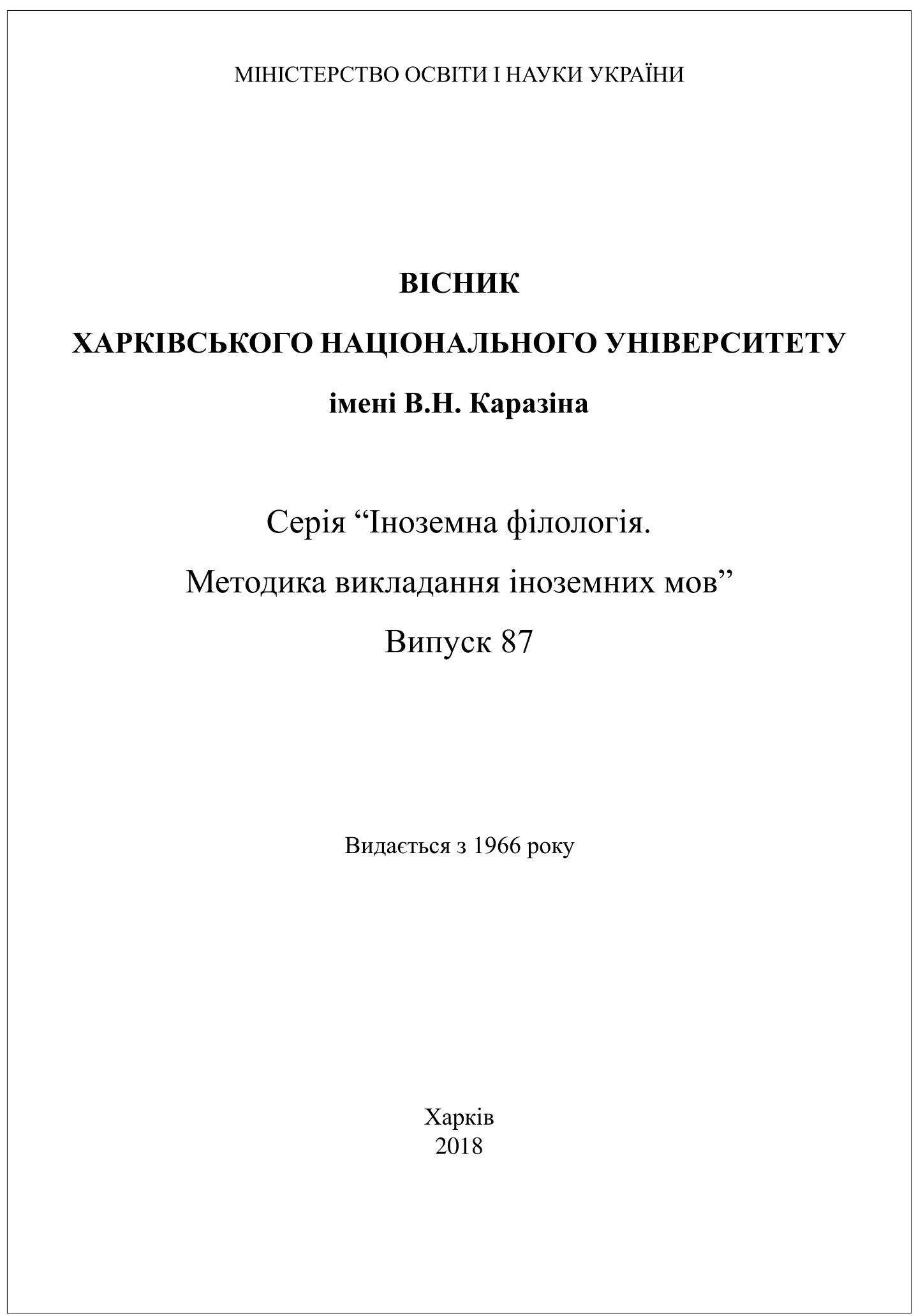Communication levels in lyrical and poetic discourse
Abstract
The article presents a concept of poetic text analysis from the perspective of speech act theory which distinguishes not two (as recognized in communicative pragmatic studies), but three levels of communication in lyrical and poetic discourse. These types are: 1) aesthetic communication; 2) external/vertical communication “author – reader” which appears as is or as "author – protagonist" or "protagonist – reader"; 3) internal/horizontal communication "character 1 – character 2". Being primary in poetic text, aesthetic communication is based on self-reference and the author’s aesthetic intention, whereas vertical and horizontal communications rely on reference per se and the author's referential intention. Thus, poetic text simultaneously realizes two speech acts – a poetic one (self-referential) and a general one (referential). Referential intention determines the speaker’s attitude towards the given content, and the aesthetic one – towards the word form used to convey this content. Poetic speech act is a subtype of expressive illocutionary act and introduces realization of the aesthetic intention which is seen in the author's illocutionary goal – to express true positive emotional evaluative attitude towards the word form being created, as well as the perlocutionary goal of affecting the reader's aesthetic feelings regarding the word form. Being interdependent and -related, the author’s referential and aesthetic intentions are reflected both at the level of utterance and text. The suggested concept is developed on examples of linguistic pragmatic interpretation of "New objectivity" poetry texts by M. Kaléko, E. Kästner and J. Ringelnatz.
Downloads
References
Betten, A. (1985). Sprachrealismus im deutschen Drama der siebziger Jahre. Heidelberg: Winter.
Betten, A. (1986). Einige grundsätzliche Überlegungen zur Beschreibung alltagssprachlicher und literarischer Dialoge. In: F. Hundsnurscher, und E. Weigand (edd.). Dialoganalyse. Tübingen: Niemeyer, S. 3–12.
Bezuglaja, L. (2014). Dinamika antropocentrizma v diskursivnoj lingvopragmatike [Anthropocentrism dynamics in discourse pragmatics]. In : E. Malinowska (ed.). Stylistzka XXIII. Opole: Uniwersytet Opolski Publ., pp. 87–100.
Bezuglaja, L.R. (2013). Pragmapojetika v kognitivnom izmerenii [Pragmapoetics in cognitive dimension]. Visnyk Kyiv nats. linhv. univ. – Messenger of Kyiv National Linguistic University, 16(2), 20–27 (in Russian)
Dijk, T. van. (1980). The pragmatics of literary communication. In: E. Forastieri-Braschi, G. Guinness, and H. Lopez-Morales (eds.). On text and context. Rio Piedras, Puerto Rico: Editorial Universitaria, pp. 3–16.
Hauenherm, E. (1996). Dialoganalyse und Drameninterpretation. In: K.A. Sroka (ed.). Kognitive Aspekte der Sprache. Tьbingen: Niemeyer, S. 97–102.
Henne, H. (1984). Gegensprechanlagen – Literarische Dialoge (Botho Strauß) und linguistische Gesprächsanalyse. In: D. Cherubim, H. Henne, und H. Rehbock (eds.). Gespräche zwischen Alltag und Literatur. Tübingen: Niemeyer, S. 1–19.
Hillebrand, R. (2011). Liebeslyrik der Neuen Sachlichkeit. München: GRINS.
Jakobson, R. (1987). Raboty po pojetike [Works on poetics]. Moscow: Progress Publ.
Lagutin, V.I. (1991). Problemy analiza hudozhestvennogo dialoga (K pragmalingvisticheskoj teorii dramy) [Problems of artistic dialogue abalysis]. Kishinev: Shtiinca Publ.
Landa, J.Á.G. (1992). Speech act theory and the concept of intention in literary criticism. Review of English Studies Canaria, 24, 89–104.
Merilai, А. (2007). Pragmapoetics as literary philosophy. Interlitteraria, 12, 379–392.
Pankau, J.G. (2010). Einführung in die Literatur der Neuen Sachlichkeit. Darmstadt: WBG.
Piehler, N. (2001). Neue Sachlichkeit – Antwort auf den Expressionismus. Available at: http://www.hausarbeiten.de/faecher/vorschau/100656.html
Searle, J.R. (1982). Der logische Status fiktionalen Diskurses. In: J.R. Searle (ed.). Ausdruck und Bedeutung. Frankfurt/M.: Suhrkamp, S. 80–97.




